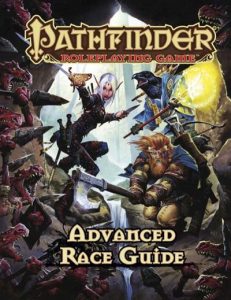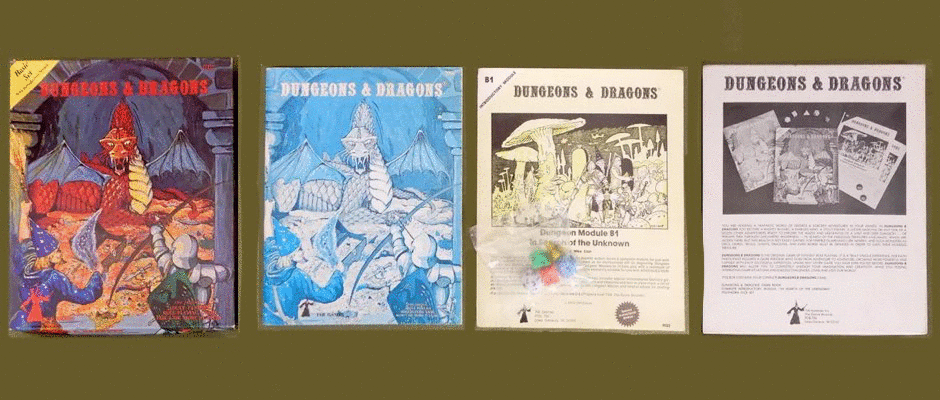
This is Pathfinder‘s take on one of my favorite 3e books, Savage Species. In the original for D&D, WOTC laid down a solid set of options on how to integrate other races and monsters as PCs into the game. I agreed with their rationale, especially when they showed you how to break down, say a minotaur, level by level. If you want to start from first level, you’d get a much weaker version but as you gain experience, eventually you’ll have the standard minotaur from the Monster Manual. Or you can begin as a standard minotaur but receive an adjustment in experience called an Effective Character Level (ECL). I can’t remember off the top of my head how high it was for a minotaur, maybe eight (ECL 8). The better example I do recall was the half-dragon, which always led to the player whining for it was a mere three (ECL 3). This racial option gave the PC positive bonuses toward five out of the six attributes, a bump in hit dice (if the class used d6, they get d8 instead), claws, sharp teeth, tougher skin toward their armor class, darkvision, immunity to paralysis and a daily breath-weapon attack. This would add up to an ECL of three as per Savage. So, if a player chooses to be a half-dragon sorcerer at first level in 3e, they “started” with 6000 experience points (third level as per the ECL) and would need to get to 10,000 to make second, the difference between third and fourth level. Meanwhile, the players who chose the usual races would be progressing to second, third, etc., leaving the half-dragon behind. The player would complain on how “weak” a first-level sorcerer is while forgetting how their PC received numerous benefits upfront.
Advanced Race Guide takes a different and somewhat confusing solution. Paizo breaks down the standard humanoid races and more common monsters’ powers, abilities and stats to give a value called Race Points (RPs).
I’m jumping ahead though.
Race spends the first chapter providing additional options for the Core Races we all know and have played for decades. Then they propose different racial traits, favored class options, racial archetypes, equipment, Feats, magic items, spells. The second chapter repeats this treatment with what are labelled Featured Races. These races were mostly introduced in 3e as playable: Aasimars, Tieflings, elementally plane-touched, Catfolk, Ratfolk and those who are often the enemy; Orcs, Goblins, Drow, etc. The third chapter continues what Core and Featured received with what are branded as Uncommon Races. The Uncommon aren’t particularly more powerful, they’re just not seen very often and could be considered to be legends told by someone wanting free drinks: Changelings, Duergars, Kitsune, Merfolk, Svirfneblin, Strix, etc.
It’s the fourth chapter we all want to read, instructions on how to break down a monster or race into RPs. Paizo also gives values to the Core, Featured and Uncommon to provide some helpful perspective on how they all stack up. There are further examples through the chapter in sidebars to demonstrate the system and the rationale on what their RPs are, Gnolls, Lizardfolk, Ogres and Centaurs.
So what costs an RP?
- Natural Armor
- Stat boosts
- Darkvision
- Size
- Category (Fey, Giant)
- Base Speed
- Damage Reduction
- Additional limbs
- Spell Resistance
- Fast Healing/Regeneration
- Extra languages
The one big area Race differs from Savage is on hit dice. In the example of a Gnoll, this creature always starts with 2d8 for hit points due to its size (they average seven feet in height) and yet there’s no RP cost this considerable advantage over newbies with 1d6 or 1d8. Same goes for an Ogre which has 4d8 as a standard amount in the hit point department. Now the Ogre costs 23 RP, about 13 over the average Core race, so the mystery to me is how to balance it out with the players. Paizo never says.
I propose this and it’s how I plan to use it in my game should it come up. Since the Core races only exceed 10 RPs once, oddly Dwarves, I will figure out the RPs for the player’s choice, subtract 10 and that’s the percentage added to the PC’s XP progression. Should the creature have two or more hit dice to start with, add 1 RP back.
For example, Ogres are 23 RPs to build. Subtract 10, leaves 13 but add back 4 courtesy of their automatic 4d8 hit dice. Thus a first-level Ogre Fighter has 4d8+1d10 for hit points but has the RP adjustment of 17% more on their XP to make second level; 2340 v. a Core’s 2000. This would be easier for a player to accept than saying an Ogre starts with an eighth level character’s XP and needs ninth just go up one level of Fighter.
A while ago, I broke down a rare creature called an aranea because long ago, my friend Jeremy lost his Paladin in the middle of an adventure and we agreed to let him be one of these weird, friendly, shape-shifting spider creatures. According to Race, I think it added up to an RP total in the eighties before I could even take in the 5d10 hit points. In my defense, the creature has a slug of advantages over the average starting PC plus Jeremy is a better sport with such a thing and Essani (as he was named) lives on an NPC in my game.
The book wraps up with age tables for the Core, Featured and Uncommon Races too.
I seriously recommend Advanced Race Guide for any Pathfinder campaign. It helps shake up what can be a mundane element in the game and could aid in fleshing out NPCs/Villains.
There will be a pocket edition later this year.
